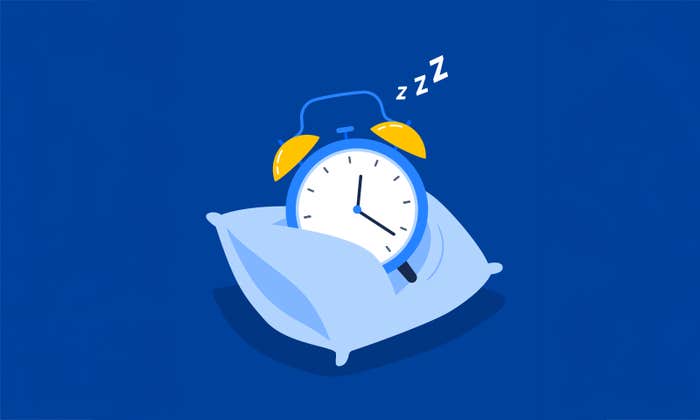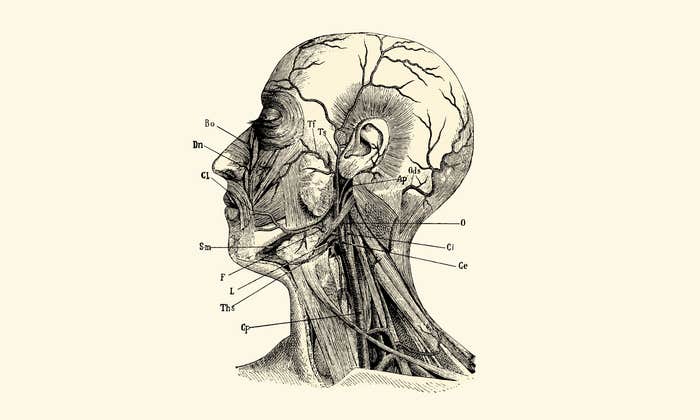Fifteen years ago, almost as soon as she arrived in the Cleveland suburbs, her hometown, a high-pitched ringing disturbed Katie Hellmuth Martin’s sense of peace. She was looking forward to settling into the gentle sounds of summer she’d grown up with: birdcalls during the day, the relaxing cadence of crickets at night. Instead, her respite from the bustle of New York City was cut short within days, and she began to experience extreme sensitivity to all kinds of noise—a person chewing, a cat’s meow, her husband kissing her near the ear, even someone biting her nails, were suddenly excruciating to listen to. It felt “like lightning striking in your ear,” she says.
Today, she is only now planning to seek out a doctor’s care for what 50 million other Americans suffer from: tinnitus, a condition that, due to its many causes, is difficult to diagnose. It is often described by the sufferer as a howling, buzzing, whistling, clicking, or roaring in the ears; yet these sounds don’t come from any external source, if they can be said to be sounds at all (in most cases, they are perceptible only to the tinnitus sufferer). Martin has wondered if the loud rumble of New York’s subways were responsible. In any case, she says, “I just thought it was something I had to live with.”
Martin’s resignation in the face of tinnitus isn’t rare, perhaps because tinnitus remains poorly understood. Historical references to tinnitus, or a “humming, whispering, or singing in the ears,” according to 8th century B.C. Assyrian tablets, can allegedly be found as far back as the beginning of the 16th century B.C., on Egyptian papyrus. Egyptians treated it with a variety of herbal saps and unguents applied through reeds directly into the ear, while the Assyrians and Mesopotamians used opium, belladonna, and cannabis. Asian mystics believed it revealed sensitivity to the divine. Many famous historical figures are said to have suffered from the condition, including Joan of Arc, Beethoven, and even Charles Darwin, who kept daily records of it.
“Tinnitus itself is not a disease, it is a symptom,” says Aaron Moberly, assistant professor of otolaryngology and an ear, nose, and throat (ENT) expert at the Ohio State University Wexner Medical Center. “Tinnitus comes about because of the brain’s attempt to compensate for a sensory deficit” in the peripheral nervous system, which transmits information between the central nervous system (brain and spinal cord) and the rest of the body, says Carol Bauer, chair of the division of otolaryngology, head, and neck surgery at Southern Illinois University School of Medicine. “The ear’s cochlea is no longer sending normal electrical signals to the brain either, because its hair cells are not working or the hearing nerve isn’t working. The brain tries to compensate for that.” Its compensation for that hearing loss, oddly, is to manufacture an unhelpful sound.
“Both tinnitus and chronic pain are chronic conditions—there is no cure.”
Not knowing how, or why, this happens had vexed Josef Rauschecker, a neurophysiologist at the University of Georgetown. But then, not long ago, Rasuchecker had an epiphany at a conference in Finland on neurodisorders, where a researcher was discussing the neurological dysfunctions of chronic pain, which were similar to tinnitus. “We both found the same brain structure involved in the cortex,” he says. “Both tinnitus and chronic pain are chronic conditions—there is no cure.”
In his recent opinion paper, published in Cell in October with colleagues, he says, “It is now becoming increasingly clear that higher cognitive and affective brain systems are centrally involved in the pathology of both disorders.”
That’s certainly not the consensus among most researchers—at least not yet; but they do at least agree that tinnitus comes in two types: objective, and subjective (or pulsatile), though the condition doesn’t always fit neatly into one of these two categories. Doctors can actually hear objective tinnitus through a stethoscope—it is quite rare, and manifests as damage to the structure of the ear and can occasionally be corrected surgically. This damage can result from such benign conditions as too much ear wax, as well as from very serious conditions such as chronic traumatic encephalopathy (CTE), auditory tumors, and arteriosclerosis. “Subjective” tinnitus, much more common, also has multiple potential causes: age-related degeneration of the cochlear hairs, Ménière’s disease—a vestibular disorder of the inner ear—and even drugs such as aspirin, quinine, and cancer chemotherapeutics. But the most common cause is loud noise: explosives or weapons, loud machinery, attending a concert or sports event, just to name a few.
The underlying cause of all cases of tinnitus, though, Rauschecker argues, may be what also sets off chronic pain. In both, there is impairment in the frontal lobe, where most of the dopamine-sensitive neurons in the cerebral cortex reside, and hyperactivity in the striatum, a critical component of the reward system, Rasuchecker says. The impairment leads to a reduction in grey matter volume and neural activity in, specifically, the ventromedial prefrontal cortex, and the nucleus accumbens, which act as “gatekeepers” for pain and auditory signals. In tinnitus and chronic pain, these structures appear to become dysfunctional, turning “up” pain and auditory signals, leading to pain or tinnitus noise.
“If I did not have a white noise machine while I worked, concentrating would be very, very difficult.”
In an April study, Amber Leaver, a neuroscientist at the Georgetown University Medical Center, along with Rasuchecker and other colleagues, conducted a magnetic resonance image experiment with 41 subjects (21 tinnitus patients, 19 controls), and found support for Rasuchecker’s model linking chronic pain and tinnitus. “Our results suggest that unique functional relationships exist between auditory and non-auditory regions in people with tinnitus,” the researchers say.
Tinnitus has also been associated with certain psychological disorders, namely depression and anxiety. Researchers used to believe that tinnitus caused the depression, because of its impact on quality of life, but now, Rauschecker says, some believe there may be “an underlying brain condition that gives you tinnitus and depression.” For this reason, Rasuchecker feels that dopamine and serotonin are hot candidates for drug therapies. Approximately one-third of tinnitus sufferers, he says, do already receive some relief with selective serotonin reuptake inhibitor (SSRI) antidepressants. Hearing aids and cochlear implants can also help by increasing the level of ambient sound overall, though not everyone wants or can afford them.
A study in March, citing Rauschecker’s paper on chronic pain and tinnitus, demonstrates “that the meta-cognitive ability to acknowledge and let go of arising sensory events engages a unique, self-facilitated pain modulatory system.” In others words, meditation can help reduce chronic pain, and perhaps tinnitus.
More common, though, is acoustic therapy, in which patients use wide-band white noise machines to mask the ringing in their ears. Katie Hellmuth Martin takes a white-noise machine with her everywhere she goes. “If I didn’t have a white noise machine while I worked, concentrating would be very, very difficult,” she says.
Jordan Rosenfeld is an author of seven books and a freelance writer. Her work has appeared in such places as The Atlantic, Good, mental_floss, New York Magazine, Ozy, Pacific Standard, Quartz, Scientific American, and many more. Follow her @Jordanrosenfeld.
The lead photograph is courtesy of Jason Rogers via Flickr.


























